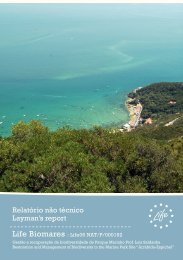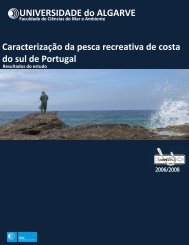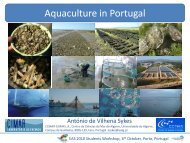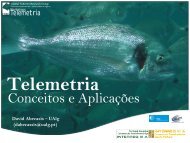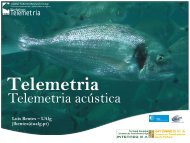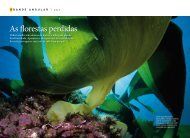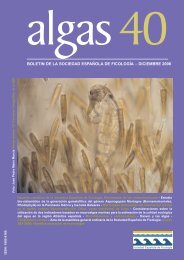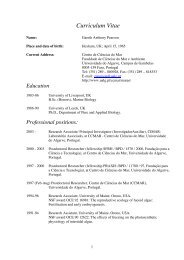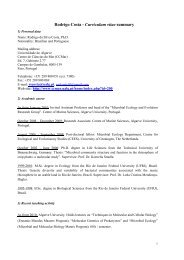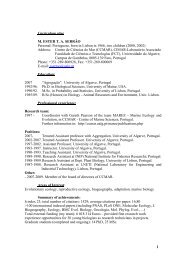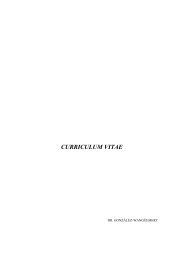Universidade do Algarve Faculdade de Ciências do Mar e do ...
Universidade do Algarve Faculdade de Ciências do Mar e do ...
Universidade do Algarve Faculdade de Ciências do Mar e do ...
Create successful ePaper yourself
Turn your PDF publications into a flip-book with our unique Google optimized e-Paper software.
Abstract<br />
Ria Formosa is one of the largest lagoon systems on the Portuguese<br />
coast. This type of habitat is consi<strong>de</strong>red particularly vulnerable to <strong>de</strong>struction<br />
and <strong>de</strong>gradation mainly because of human activities. This makes the knowledge<br />
of the ichthyofauna, and particularly the way it uses this system extremely<br />
necessary to proceed with an a<strong>de</strong>quate management of the system and the<br />
species. Being so, the main objectives of this study were to <strong>de</strong>termine the<br />
suitability of the use of acoustic telemetry and conventional tagging on the study<br />
of the movements and habitat use by four of the most important sparid fishes<br />
that inhabit Ria Formosa. Preliminary results on movements, home range and<br />
activity period of Diplodus vulgaris, Diplodus sargus, Sarpa salpa and Sparus<br />
aurata were ensuing objectives.<br />
Results on conventional tagging (n=1980) showed that juveniles of D.<br />
vulgaris and S. salpa perform small displacements <strong>de</strong>monstrating high site<br />
fi<strong>de</strong>lity. The small number of recaptures of tagged D. sargus and S. aurata did<br />
not allow any conclusions.<br />
The use of acoustic telemetry (n=21) allowed us to observe that D.<br />
vulgaris and D. sargus show high site fi<strong>de</strong>lity, with the first having a smaller<br />
home range. In contrast, S. salpa dispersed throughout the study area. S.<br />
aurata showed homing abilities after being released 3,8 km away from the<br />
capture position. Two different behavioral patterns were noticeable, some<br />
individuals being more active during the night while others were more active<br />
during the day.<br />
iii




